A Novel Conserved Domain Mediates Dimerization of Protein Kinase D (PKD) Isoforms: DIMERIZATION IS ESSENTIAL FOR PKD-DEPENDENT REGULATION OF SECRETION AND INNATE IMMUNITY
- PMID: 27662904
- PMCID: PMC5095407
- DOI: 10.1074/jbc.M116.735399
A Novel Conserved Domain Mediates Dimerization of Protein Kinase D (PKD) Isoforms: DIMERIZATION IS ESSENTIAL FOR PKD-DEPENDENT REGULATION OF SECRETION AND INNATE IMMUNITY
Abstract
Protein kinase D (PKD) isoforms are protein kinase C effectors in signaling pathways regulated by diacylglycerol. Important physiological processes (including secretion, immune responses, motility, and transcription) are placed under diacylglycerol control by the distinctive substrate specificity and subcellular distribution of PKDs. Potentially, broadly co-expressed PKD polypeptides may interact to generate homo- or heteromultimeric regulatory complexes. However, the frequency, molecular basis, regulatory significance, and physiological relevance of stable PKD-PKD interactions are largely unknown. Here, we demonstrate that mammalian PKDs 1-3 and the prototypical Caenorhabditis elegans PKD, DKF-2A, are exclusively (homo- or hetero-) dimers in cell extracts and intact cells. We discovered and characterized a novel, highly conserved N-terminal domain, comprising 92 amino acids, which mediates dimerization of PKD1, PKD2, and PKD3 monomers. A similar domain directs DKF-2A homodimerization. Dimerization occurred independently of properties of the regulatory and kinase domains of PKDs. Disruption of PKD dimerization abrogates secretion of PAUF, a protein carried in small trans-Golgi network-derived vesicles. In addition, disruption of DKF-2A homodimerization in C. elegans intestine impaired and degraded the immune defense of the intact animal against an ingested bacterial pathogen. Finally, dimerization was indispensable for the strong, dominant negative effect of catalytically inactive PKDs. Overall, the structural integrity and function of the novel dimerization domain are essential for PKD-mediated regulation of a key aspect of cell physiology, secretion, and innate immunity in vivo.
Keywords: Caenorhabditis elegans (C. elegans); heterodimer; homodimer; innate immunity; native Mr; oligomerization domain; protein kinase D (PKD); secretion; signal transduction.
© 2016 by The American Society for Biochemistry and Molecular Biology, Inc.
Figures
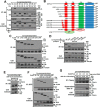
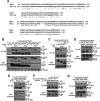

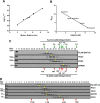

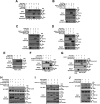
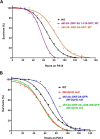
Similar articles
-
Decoding the Cardiac Actions of Protein Kinase D Isoforms.Mol Pharmacol. 2021 Dec;100(6):558-567. doi: 10.1124/molpharm.121.000341. Epub 2021 Sep 16. Mol Pharmacol. 2021. PMID: 34531296 Free PMC article. Review.
-
Characterization of a novel protein kinase D: Caenorhabditis elegans DKF-1 is activated by translocation-phosphorylation and regulates movement and growth in vivo.J Biol Chem. 2006 Jun 30;281(26):17801-14. doi: 10.1074/jbc.M511899200. Epub 2006 Apr 13. J Biol Chem. 2006. PMID: 16613841
-
Properties, regulation, and in vivo functions of a novel protein kinase D: Caenorhabditis elegans DKF-2 links diacylglycerol second messenger to the regulation of stress responses and life span.J Biol Chem. 2007 Oct 26;282(43):31273-88. doi: 10.1074/jbc.M701532200. Epub 2007 Aug 29. J Biol Chem. 2007. PMID: 17728253
-
Conserved domains subserve novel mechanisms and functions in DKF-1, a Caenorhabditis elegans protein kinase D.J Biol Chem. 2006 Jun 30;281(26):17815-26. doi: 10.1074/jbc.M511898200. Epub 2006 Apr 13. J Biol Chem. 2006. PMID: 16613842
-
It Takes Two to Tango: Activation of Protein Kinase D by Dimerization.Bioessays. 2020 Apr;42(4):e1900222. doi: 10.1002/bies.201900222. Epub 2020 Jan 29. Bioessays. 2020. PMID: 31997382 Review.
Cited by
-
A ubiquitin-like domain controls protein kinase D dimerization and activation by trans-autophosphorylation.J Biol Chem. 2019 Sep 27;294(39):14422-14441. doi: 10.1074/jbc.RA119.008713. Epub 2019 Aug 12. J Biol Chem. 2019. PMID: 31406020 Free PMC article.
-
Decoding the Cardiac Actions of Protein Kinase D Isoforms.Mol Pharmacol. 2021 Dec;100(6):558-567. doi: 10.1124/molpharm.121.000341. Epub 2021 Sep 16. Mol Pharmacol. 2021. PMID: 34531296 Free PMC article. Review.
-
Multifaceted Functions of Protein Kinase D in Pathological Processes and Human Diseases.Biomolecules. 2021 Mar 23;11(3):483. doi: 10.3390/biom11030483. Biomolecules. 2021. PMID: 33807058 Free PMC article. Review.
-
Natural variation in protein kinase D modifies alcohol sensitivity in Caenorhabditis elegans.bioRxiv [Preprint]. 2024 Jun 9:2024.06.09.598102. doi: 10.1101/2024.06.09.598102. bioRxiv. 2024. PMID: 38895441 Free PMC article. Preprint.
-
Neurogenic differentiation 2 promotes inflammatory activation of macrophages in doxorubicin-induced myocarditis via regulating protein kinase D.BMC Cardiovasc Disord. 2025 Mar 18;25(1):195. doi: 10.1186/s12872-025-04626-7. BMC Cardiovasc Disord. 2025. PMID: 40102732 Free PMC article.
References
-
- Ellwanger K., and Hausser A. (2013) Physiological functions of protein kinase D in vivo. IUBMB Life 65, 98–107 - PubMed
MeSH terms
Substances
Grants and funding
LinkOut - more resources
Full Text Sources
Other Literature Sources
Molecular Biology Databases
Research Materials
Miscellaneous

